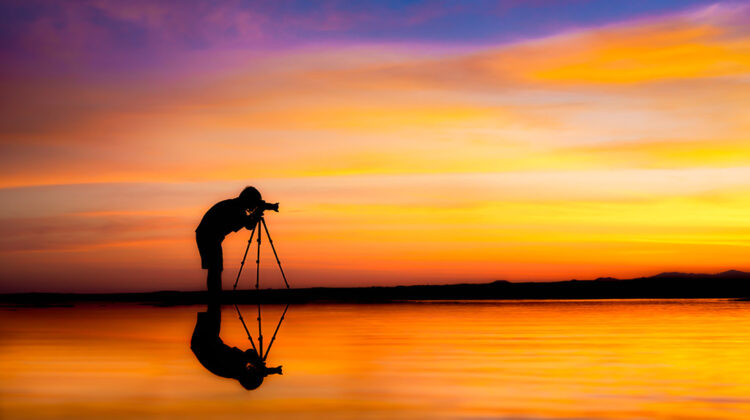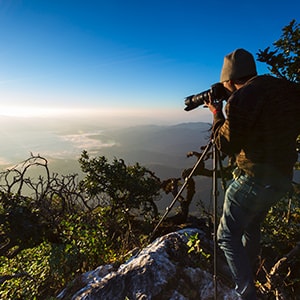
For those photographers just embarking on capturing great images the vast range of landscape photography tips for beginners can be quite overwhelming.
However, by concentrating on some core topics and with the right advice on tackling each element one at a time it’ s possible to quickly grasp the basics and get outdoors capturing great images.
Tips for buying the right camera
With numerous cameras on offer in today’s market it can be difficult to know where to start to ensure you spend your money wisely and get the right camera and equipment.
At this stage, there is a delicate balance needed between not needing to spend too much money on your first camera (as it’ s unlikely to be your last if you get the bug!), but equally future proofing your investment as much as possible; that the camera can keep pace with your requirements as you steadily improve your skills.
One of the most important tips for beginners just starting landscape photography, is to spend your money wisely on equipment. Your shopping list will normally have the following essential pieces of equipment on it:
- Camera
- Lenses
- Memory cards
- Tripod
- Filters
- Processing software
There are a multitude of camera types and manufacturers to choose from. In our separate equipment section, we have a guide to the differences between these cameras.
The principle choice will be whether to go for a Digital SLR or Mirrorless system. Irrespective, having a camera with interchangeable lenses is an essential feature for the aspiring landscape photographer.
Many manufacturers offer basic cameras with at least one starter lens.
These will vary depending on the size of the sensor of your camera and the associated magnification effect. Generally, starting with a wide-angle lens is a good starting point for landscape photography.
Other Equipment
Our equipment guide also provides more detailed information and useful tips for beginners on different tripods, memory cards and filters, but in summary a sturdy tripod is important and a quality brand of reliable memory cards is an equally worthwhile investment.
Using filters in your photography may seem premature at this stage, but as a minimum you should look to add a UV filter onto your newly purchased lens to protect it from scratches –it’ s a lot cheaper to buy a new filter than a replacement lens after all.
 Get outside taking photos!
Get outside taking photos!
Once you have the above basic camera and equipment, one of the best things to get started is practice using the camera in your local area.
You don’ t have to go far, just the garden or walk around your local area or the local park will do to experiment and get to grips with your camera’ s different settings. This is best done by selecting a few different focal points such as an interesting tree or building and just start to get used to how different settings effect the images you take.
These include using manual settings, understanding depth of field, aperture, ISO settings and metering. If these concepts all seem daunting at this stage, fear not – head over to our blog where you will find detailed information on all of these subjects.
It is best to take your time with this, so it’ s a good idea to make an hour or two spare in your day so that you can fully get to grips with the camera’s settings.
At this stage it doesn’t matter about the time of day you decide to venture out with regards to lighting on your first trip; you may hear constantly that photographers have to be ‘early birds’ in order not to miss the sunrise, but that will come from experience and all that matters is that you just find a bit of time in your day away from whatever else you need to do.
Find inspiring locations
Once you have become familiar with your camera’s settings and buttons, among the other tips for beginners is that you should try a different location and venture out into the countryside.
Is there an interesting location you can drive to nearby, such as a field full of oil seed rape or one where they have just cut the hay and the rolled-up barrels are lined up waiting to be collected?
Good locations for beginners without going too far are rolling fields full of maize or poppies, woodland areas with dappled shade in the middle of a summer’s day, a forest floor carpeted with springtime bluebells or simply a view of a local village church across a vast, open field.
Sometimes if you just stop alongside a roadside hedgerow and find the opening to a field you can discover a view that you never thought was there.
Seasons and when to start – tips for beginners
The wonderful thing about landscape photography is that there is never a bad time to start taking photos. Each season offers different shooting opportunities.
Summer is however widely considered to be an ideal time for a beginner to get to grips with starting in landscape photography.
However, the light can be very harsh and the time of day you are photographing becomes more important.
That said, the weather is usually kinder to both you and your equipment and you don’ t need to worry about all-weather clothing or be wrapped up against the elements!
You can just concentrate on enjoying being outdoors and getting used to your camera and its settings to gain confidence in your abilities.
Other times of the year each offer their own benefits.
Spring brings a wave of fresh colours in the landscape together with warmer weather. Autumn once again brings a fresh backdrop of stunning colours and new subject matters to get out and photograph.
Whilst the winter months bring less dependable weather conditions to shoot in, on the right day can offer amazing shots enhanced further by nature’ s own set of additional props such as frost, mist and snow.
For more specific information on shooting in different seasons head over to our blog where you will find tips and ideas on what to be shooting with each season and advice on how to capture amazing photos.


 Get outside taking photos!
Get outside taking photos!